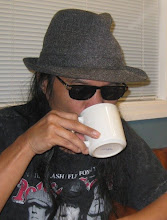RECOMMENDED. TV Series. Music.
TV Series: “Lou Grant.” / Music: Manila Sound.
TV Series. “Lou Grant.” Five Seasons, 1977 to 1982. Lou Grant works as city editor of the fictional Los Angeles Tribune daily newspaper, a job he takes after being fired from WJM-TV in Minneapolis at the end of the sitcom “The Mary Tyler Moore Show.” I didn’t follow “Mary Tyler” but it doesn’t matter. Lou Grant, played with remarkable easy realism by Ed Asner, stood alone.
To relive the past and ponder what journalism was before the 21st century, “Lou Grant” is most recommended. You may want to sit with your teenagers as well, but banish the cellphone when they do indeed agree to try some “old” stuff beyond TikTok, Twitter, Facebook, or IM/text with sweetheart.
“Lou Grant” won 13 Emmy Awards and 2 Golden Globes etcetera, but those were the days when awards were given to shows for sheer excellence and not via politically correct standard or “diversity moralism” measure.
The episodes are very compelling, real, disturbing but inspiring. Top reporters Joe Rossi (Robert Walden) and Billie Newman (Linda Kelsey) had equivalents in my days as a newbie in the newsroom. All the support characters, all the way to publisher Margaret Jones Pynchon (Nancy Marchand), weren’t inventive or innovative—no reimagined personas, I mean—the are simply those work bodies and insistent souls who tirelessly gave us news, day in and day out.
Good old days. 🎬🎭🎬
Music. Manila Sound is a music genre in the Philippines that began in the mid-1970s in Manila. The genre flourished and peaked in the mid to late-1970s during the Philippine martial law era and has influenced most of the modern genres in the country by being the forerunner to OPM or Original Pilipino Music.
The Manila Sound is styled as catchy and melodic, smooth, lightly orchestrated, accessible folk/soft rock, sometimes fused with funk, light jazz and disco. However, broadly speaking, it includes quite a number of genres (pop, vocal music, soft rock, folk pop, disco, soul, Latin jazz, funk, world music), and should therefore be best regarded as a period in Philippine popular music rather than as a single musical style.
Manila Sound typified the prevailing pop sound of the era, and drew its influences from the singer-songwriter genre of American music during the 1970s. A majority of Manila sound songs were composed in Tagalog or Taglish, although some were also written entirely in English. Sometimes, as Wikipedia puts it, these songs included "juvenile lyrics,” and less frequently, "swardspeak" (homosexual slang) recast with novelty, comedic or satirical undertones.
Top Manila Sound artists included Hotdog (songs: Pers Lab, Manila, Annie Batungbakal, Ikaw ang Miss Universe ng Buhay Ko), VST and Company (Disco Fever, Awitin Mo Isasayaw Ko), Cinderella (T.L. Ako Sa `Yo, Bato Sa Buhangin, Sa Aking Pag-iisa, Ang Boyfriend kong Baduy). The band also incorporated bossa nova in its repertoire.
Other notable acts: Apolinario Mabini Hiking Society, Sampaguita, Hagibis (the group “copies” the performing style of the American disco group the Village People), Rey Valera, Sharon Cuneta, Florante, Freddie Aguilar, and Rico J. Puno.
A prevailing tone of Manila Sound songs: Accessible lyricism, every people pop culture twang, an easy rhythm and beat. Perfect counterpoint to the sociopolitical dark of Martial Law years. 🎼🎹🎼






